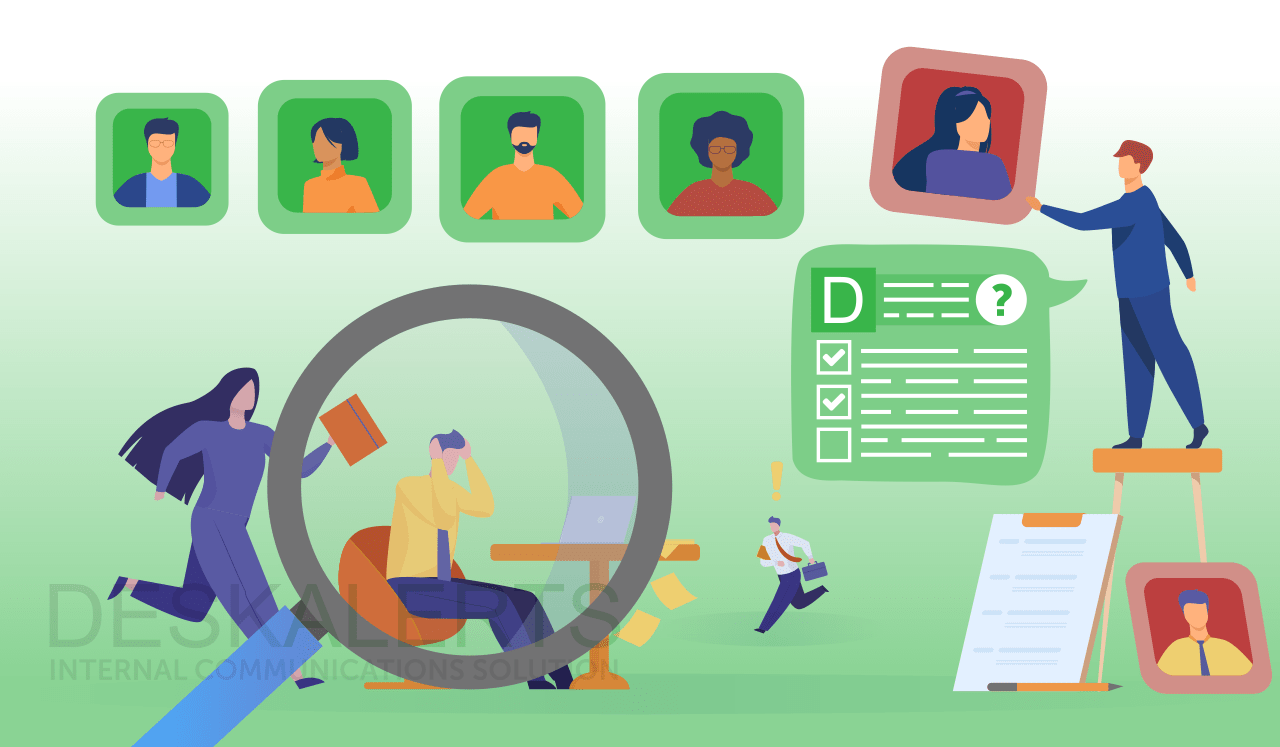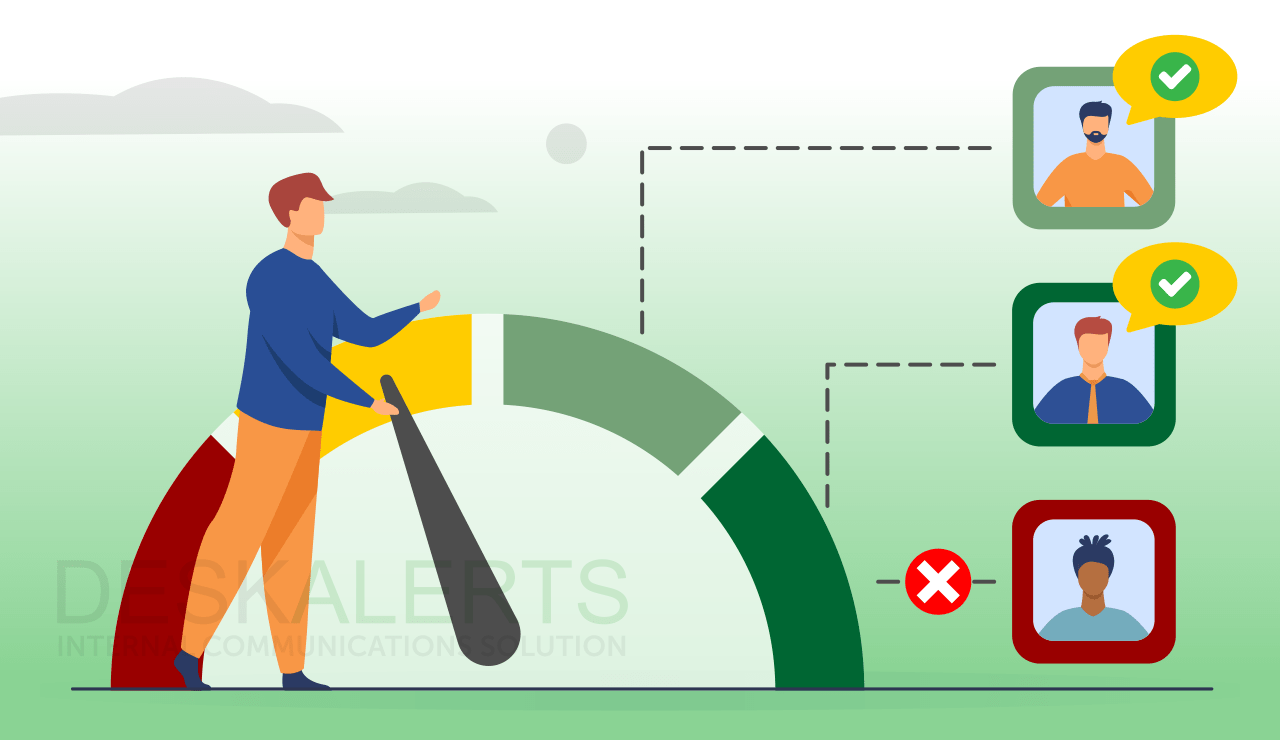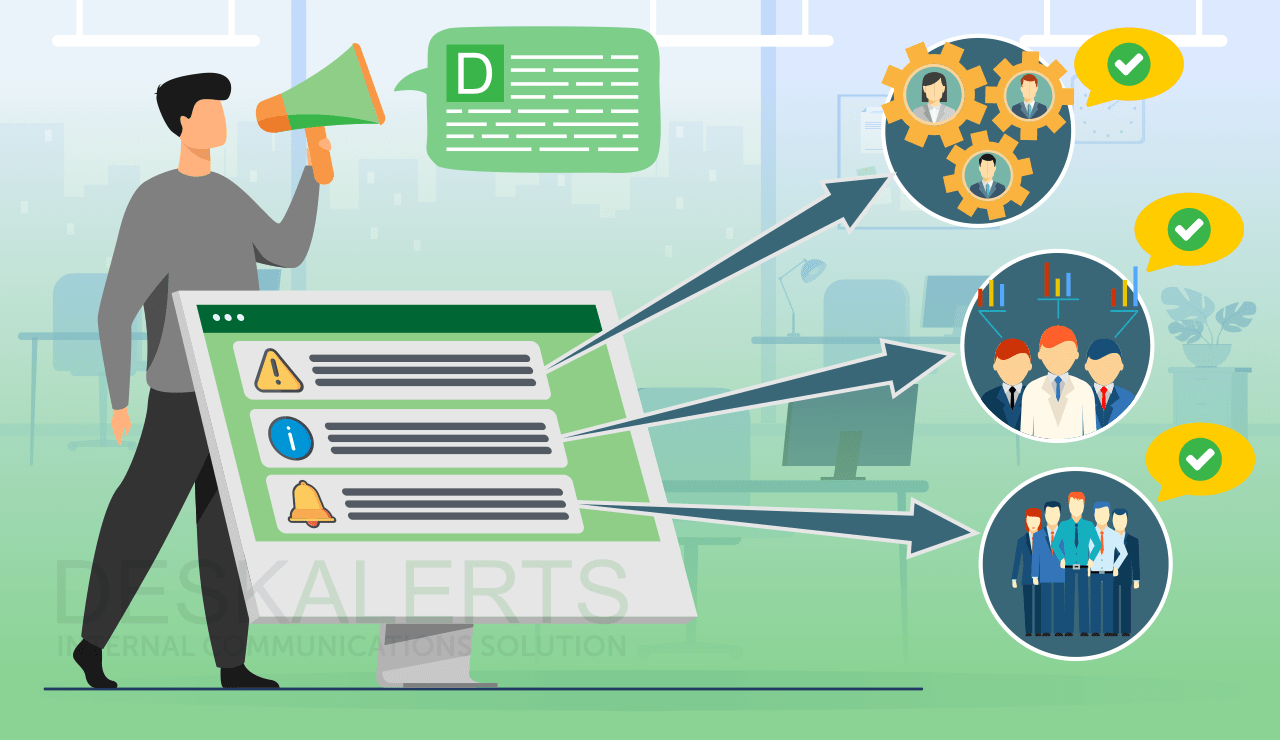
The workplace, like all aspects of life, is made up of a diverse array of individuals. While your employees will have at least one thing in common (they all work for your company!) they will also have a lot of differences. This includes their work preferences, belief systems, values, mindsets, and opinions.
Understanding your workforce is paramount when it comes to communicating with them and engaging them. Without this deep understanding, any strategies that you develop could fall flat and may not be a functional and realistic solution that is useful for your employees.
>> Download 15 top internal e-mails every communicator needs <<
What works well for one group of employees may not work for another group of employees. When you take a homogenous approach to employee relations, you can end up creating problems with some sections of your workforce who may feel rankled by the approach you’ve taken. But this can be avoided when you find out what frustrates people, what motivates them, and what they like so you can adjust your approach accordingly.
What is an employee persona?
One of the ways to better understand the wants, needs, and preferences of your employees is to develop a suite of “personas” that represent employees with particular characteristics that you can use as a stand in to help decide what actions you will take.
Employee personas are essentially semi-fictional characters that represent the employees with particular sets of attributes. There are many variations that can apply in any particular workplace. Common points of difference include:
- Age and stages of life
- Professional experience
- Tenure of empowerment
- Life experiences
- Attitudes
- Location
- Challenges they face
- Personal career goals or progression
- Performance and motivation
- Resistance to change or embracing change
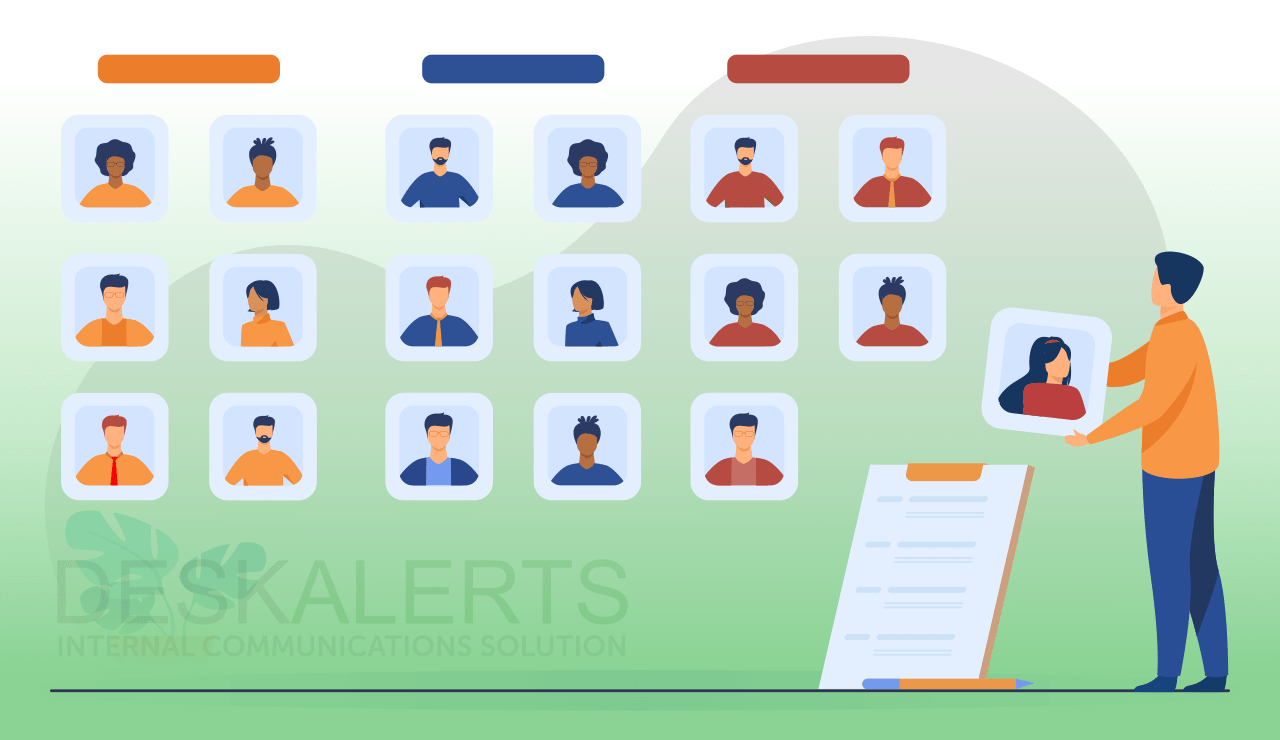
Why do you need employee personas?
Personas have been used in marketing strategies for a long time and are being increasingly used by internal communications and Human Resources professionals to help design people-centric employee experiences to improve corporate outcomes such as productivity, engagement, and retention.
Benefits of using employee personas include:
1. Delivering a more personalized approach
Employee personals will help your organization to design and deliver experiences in the workplace that are aimed at distinctive employee types.
Personalization is becoming increasingly important across all aspects of life, and the workplace is no exception. Your employees are used to receiving curated, personalized experiences when they interact with brands and social media.
A personalized approach helps them to feel valued, to feel seen and heard, and ultimately to be more productive.
There are benefits to the business to do this: according to research by KPMG, companies that take the time to invest in the experience of their employees are around four times more profitable than companies that do not do so.
2. Improve leadership
It can be hard for management to put themselves in the shoes of employees when they’re making decisions. Often their own personal experiences and preferences are quite far removed from those of their workforce.
Using employee personas allows management to visualize how employees may respond to or feel about different types of decisions that have been made. This can help to anticipate any negative reactions or feelings and to tailor the approach to improve the outcomes.
Gaining a deeper understanding of different employee personas can also help to develop your leadership team’s capabilities and improve their leadership qualities. When they begin to think about how their actions (or inactions) will affect the workforce they contribute to a better workplace experience.
3. Improving internal communications
These days people are overloaded with too much information. This is true for both their personal lives and their professional ones. Emails, voice mail messages, text messages, social media notifications, alerts, and other reminders pop up on the screens of peoples’ phones and other devices all day long.
This digital noise can be distracting and frustrating… and unfortunately, when most of these interruptions are not relevant to the person receiving them, they can begin to tune out to anything they receive from a particular source, assuming it will be irrelevant to them.
When you use employee personas you can target your internal communications more effectively and build audience segments based on employee persona types, meaning the right type of information will get to the right people and you’ll help to reduce digital noise.
Another aspect of using employee personas to improve internal communications is determining the best delivery methods - tools and channels - for different employee persona types. This means that when you have important information to send to people - for example announcing new protocols, policies, or projects - you can do away with a one-size-fits-all approach and send the information in different ways to different audience segments that reflect the way they would prefer to receive information.
4. Improving the hiring process
When you’re looking to hire someone to fill a vacancy in your organization, it’s important that not only do they have the skills and experience to do the job, but also to make sure they are a good fit with the company overall.
A study by Leadership IQ found that 46% of new hires fail within 18 months of joining an organization. Among that failure rate, just 11% fail because they don’t have the right technical skills to do the job and the other 89% fail because they can’t integrate into the workplace. That is to say, they aren’t the right cultural fit.
When you understand different employee persona types you will be able to see what type of person will thrive in your workplace and what persona type may find it difficult. Improving retention rates has an enormous benefit: recruiting new employees costs money. When you spend time investing in and training new recruits and they leave the organization, that’s even more money lost.
How to create employee personas
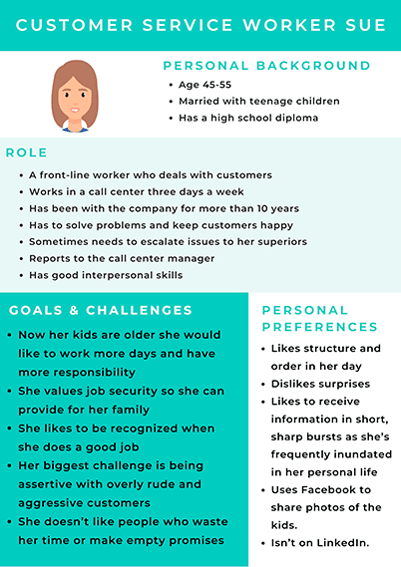 You shouldn’t guess at the employee persona types in your workplace. The development of employee personas should be guided by both qualitative and quantitative data. It’s also important to know that these personas are just a general guide and won’t capture every unique trait of every individual in your workplace.
You shouldn’t guess at the employee persona types in your workplace. The development of employee personas should be guided by both qualitative and quantitative data. It’s also important to know that these personas are just a general guide and won’t capture every unique trait of every individual in your workplace.
1. Source the relevant data
There will probably already be some data available in your organization about your employees. This might include statistics on diversity and demographics collected by the HR department, an analysis of absence and attendance rates, examining your retention rates, analyzing responses to previous employee surveys, even analytics from the IT department that shows how people use their computers or what they access on the internet from work.
More data will be needed, so this may include looking at conducting satisfaction surveys, focus groups, one-on-one meetings with managers, and carrying out various employee engagement exercises.
2. Examine external research
Learning from other organizations can save you a lot of time and pain. Look for external data from other companies to help build your employee personas by merging it with your own.
You may find instances of companies facing similar internal issues to your own and you can look at how they used employee personas to overcome the problems. They may even have research that shows how different employee persona examples reacted to the problems.
3. Use your data to develop audience segments
Your data will help you to gain insights into your internal audience (your employees). You can further extrapolate it to sort and map your employees into different audience groups.
For example, you can sort your audiences into types such as “accountants” or “people who work in the Chicago office” or “people who have been with the company for less than a year” or “people who are close to retirement” or “people with leadership roles” or “people who interact with our customers”.
These types of segments can help you to determine particular attributes that different types of employees may have so that you can focus on delivering experiences to them in the way that they would prefer.
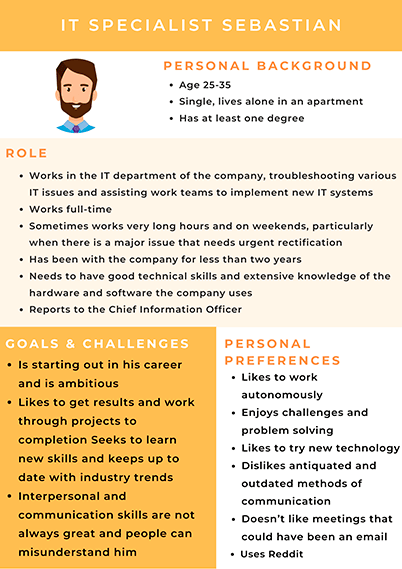
4. Build employee personas based on the audience segments
All the work you’ve done to this point is the building block for what will come next. The data and assumptions you’ve made about the different audience segments can then help you to design an employee persona based on each type. The persona can help you build a profile of the particular type of employee and what their life is like both in and out of the workplace, what influences them and what their preferences are.
5. Look at how your personas would react to your communications
Look at some previous generic internal communications that you have sent out en masse to the entire organization. Critically examine it through the lens of how each employee persona type would potentially receive it.
Was it too long and boring? Did it not contain enough details? Could it have been sent as a short message instead of a long one? Would your persona be likely to click on the email after reading the subject line? Would they be likely to take any action based on the communications they have been sent?
Answering these questions will help you to fine-tune your employee personas even more.
Common employee persona examples
There are different types of employee personas that are quite common in every workplace, across industries. These are a foundation that you can build upon by incorporating the particular demographics, job functions, aspirations, challenges faced, and preferences of your own employee cohort. It’s also important to consider that because people are so different, they may even be categorized into more than one employee persona type.
Employee personas examples include:
- The Educator: an employee persona who is both knowledgeable about your workplace, your industry, and your customers and likes to share their knowledge and wisdom with their peers.
- The Achiever: this is an employee who is driven to excel, performs well above expectations, and brings exceptional results every time.
- The Researcher: this employee persona seeks out new information to solve problems - whether that is by embarking on a fact-finding mission, networking, or seeking out professional development opportunities. They then share their findings with others and use it to drive innovation and improvement in the workplace.
- The Mentor: this person likes to see their colleagues develop and succeed and shares both technical knowledge and provides advice on the finer points of interpersonal relations.
- The Creator: this employee persona is one who thrives in an environment where they can be creative and innovative. They’re not afraid of change or putting forward their great ideas and love trying new ways of doing things.
- The Influencer: an influencer has great persuasive abilities and is often able to convince other people to take a particular course of action. This employee persona is good at negotiations and making deals.
- The Networker: this person enjoys meeting new people, creating connections, and collaborating with others to get things done. They build professional relationships that can be advantageous to themselves and the company.
- The Visionary: this employee persona always has their eye on the big picture and where things are headed in the future. They are good at setting goals and working out what steps need to be taken to reach the end of the journey.
- The Builder: these are the employees who like to dive in and get the work done, doing practical hands-on tasks, and making things happen.
How to use employee personas
Once you’ve created your employee personas examples, you can then put them to use in different parts of your organization.
Some of the ways you can use employee personas include:
- Determining how to deliver internal communications material
- Determining the best way to deliver learning and development opportunities and material
- Attracting the ideal candidate to fill a vacancy
- Create higher performing and better functioning teams
- Create better overall employee experiences in your workplace
- Develop your leadership team
- Identify strengths and weaknesses in your organization
- Identify improvements that your organization needs to make
- Improve your workplace culture
- Deliver benefits and rewards that reflect the preferences of different employee cohorts.
***
Employee personas are an exciting and innovative way to improve many aspects of your business and to create a workplace with a great corporate culture, based on people-centric design. By taking this personalized and customized approach you’ll see many benefits, and your employees will too. To help you get started on this journey, we’ve created two employee persona examples that you can learn from and incorporate into your own.
 Caroline Duncan
Caroline Duncan


 You shouldn’t guess at the employee persona types in your workplace. The development of employee personas should be guided by both qualitative and quantitative data. It’s also important to know that these personas are just a general guide and won’t capture every unique trait of every individual in your workplace.
You shouldn’t guess at the employee persona types in your workplace. The development of employee personas should be guided by both qualitative and quantitative data. It’s also important to know that these personas are just a general guide and won’t capture every unique trait of every individual in your workplace.





